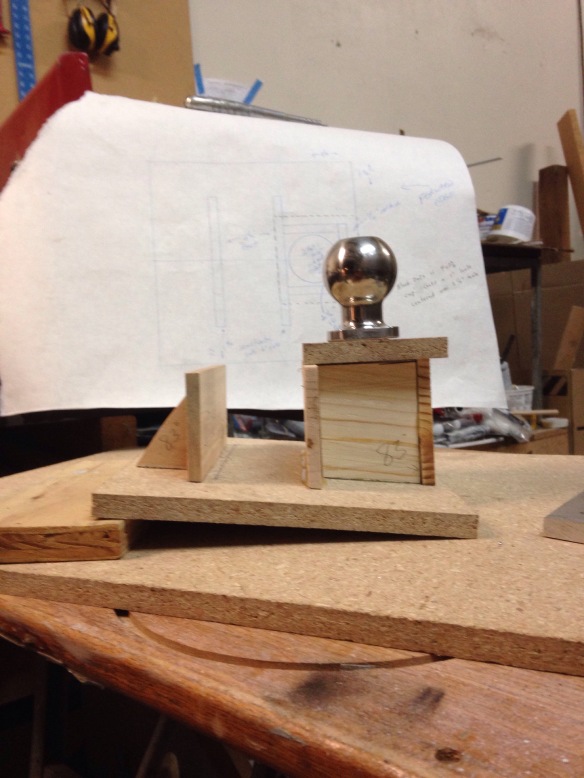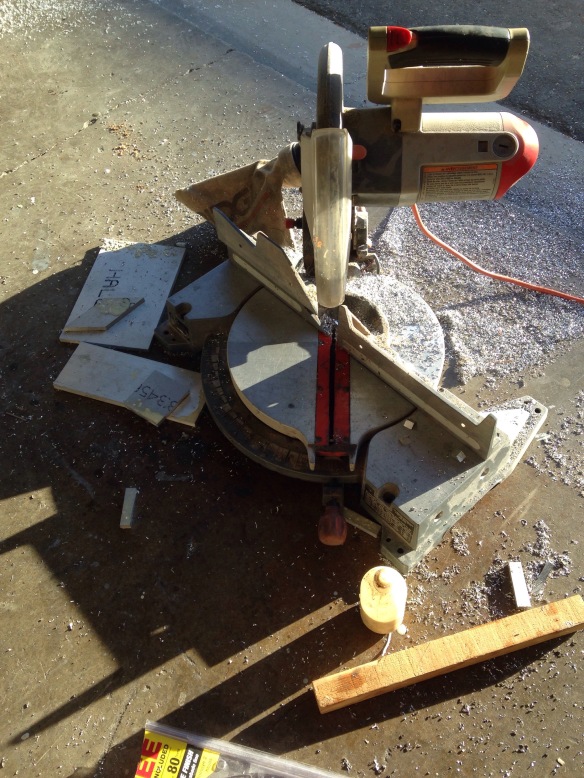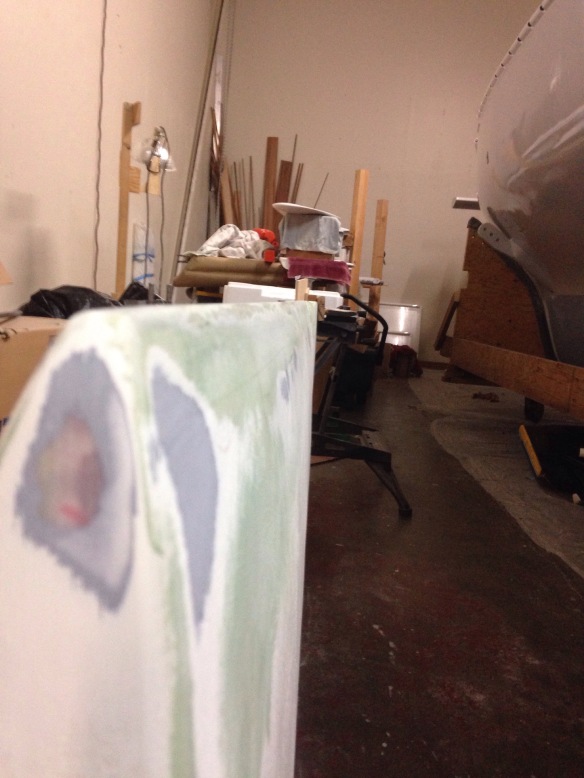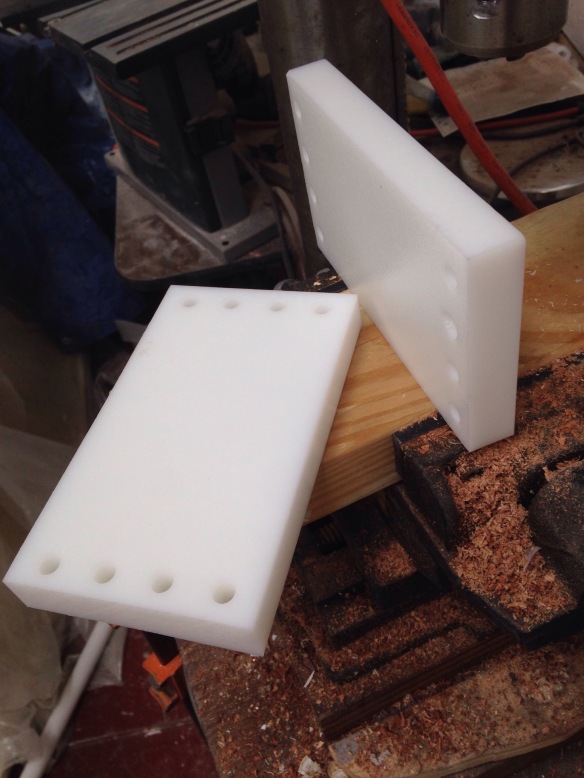The Ravenswing build has been way more than the Carters bargained for. Years have long passed since our initial voyaging target dates. But the past few weeks have turned the corner, and we’re hitting the punch list hard in preparation of a September 8 departure from San Francisco towards the Channel Islands in southern Cal. Jim spent a week aboard earlier this month, including a successful overnight trip to Half Moon Bay. Exiting SF Bay in steep chop and upper 20’s apparent wind was a good shakedown. Finally got a first good anchorage photo shoot :)

 From the dinghy we asked locals for a dinner spot. Turns out she’s the membership director of HMB yacht club.
From the dinghy we asked locals for a dinner spot. Turns out she’s the membership director of HMB yacht club.  I’m riding in from the dinghy dock on a cable barge. Great getting drinks with these folks. After returning to Richmond, we then set off to China Camp (inside SF Bay) to find Drew’s family, the F27 Papillon crew. Weather was amazing and much fun was had with the dinghys (we have matching Takacats).
I’m riding in from the dinghy dock on a cable barge. Great getting drinks with these folks. After returning to Richmond, we then set off to China Camp (inside SF Bay) to find Drew’s family, the F27 Papillon crew. Weather was amazing and much fun was had with the dinghys (we have matching Takacats).


 Anton drove over to join Ravenswing and Charlie sailed F24 Stingray over.
Anton drove over to join Ravenswing and Charlie sailed F24 Stingray over. 



 Ravenswing’s first dinner party was a hit.
Ravenswing’s first dinner party was a hit.  Yes, the Bimini top was great to have at anchor. So of course there was a sewing flurry before Jim came to visit.
Yes, the Bimini top was great to have at anchor. So of course there was a sewing flurry before Jim came to visit.  the blue one was part of the used unit we picked up for $120. Just kept cutting and reseweing it until it was a usable pattern for our shape.
the blue one was part of the used unit we picked up for $120. Just kept cutting and reseweing it until it was a usable pattern for our shape. 





 Next we built a new jib bag, as the crew will tell you the first one sucked (too tight).
Next we built a new jib bag, as the crew will tell you the first one sucked (too tight). 


 But not to waste anything, the first jib bag was easily modified to become the new stay-on-deck roller Reacher bag. Thx to Round Midnight for that idea!
But not to waste anything, the first jib bag was easily modified to become the new stay-on-deck roller Reacher bag. Thx to Round Midnight for that idea! We’ve also been quite focused on safety gear. The
We’ve also been quite focused on safety gear. The  jack lines got fitted. They install easily and get put away when not needed.
jack lines got fitted. They install easily and get put away when not needed.
The rudder finally got its permanent fix for the proper fore/aft take setting. Instead of shiming the cassette, the rudder grew an angled wedge up where it rests underway inside the cassette. Not particularly pretty but totally effective.  It sailed great in the snot to Half Moon Bay.
It sailed great in the snot to Half Moon Bay.
The float hulls have had bouts of “stale air” in the three years since launch. They finally got solar vents. Put them in the hatch doors, so as not to mess with the hull decks. 



Just before the China Camp trip we received the replacement electric controller for the fridge/freezer compressor. Ouch, that was $300 shot thanks to the failed escape hatch in June that salt-water soaked the equipment room under the cockpit.  Fridge unit is working fine again and right now we’re creating the divider to separate freezer from cooler/refer side.
Fridge unit is working fine again and right now we’re creating the divider to separate freezer from cooler/refer side.
And yea, also had to replace the Lavac toilet bowl after dropping the original during the paint job of the revised water closet floor. This is the new version with a more robust hinge and seal setup. If anyone out there needs original Lavac lid parts, holler. 
The co-owner agreed to poke her nose out the Gate, aided perhaps by her elder son’s encouragement. Thank you Ravenswing for giving us good times together. I’ll explain next time why Colin was able to come aboard unexpectedly…


 Keith will like this angle, showing how the temporary escape hatch cover is flush with the hull. The real one is back home for final fairing and paint.
Keith will like this angle, showing how the temporary escape hatch cover is flush with the hull. The real one is back home for final fairing and paint. 


 Yeah locals, legendary crew Dan M came out and was immediately put to work. He wonders why it’s called peel-ply, when it doesn’t seem to peel so well…
Yeah locals, legendary crew Dan M came out and was immediately put to work. He wonders why it’s called peel-ply, when it doesn’t seem to peel so well…







 Pulling the vacuum on both sides of the hatch area at the same time was pretty fun fabrication stuff. This one came out very nicely. Fairing went quickly in the hot weather, and the new work got a first primer coat Sunday eve.
Pulling the vacuum on both sides of the hatch area at the same time was pretty fun fabrication stuff. This one came out very nicely. Fairing went quickly in the hot weather, and the new work got a first primer coat Sunday eve. 



 The stronger gudgeon post looks like it should have always been there.
The stronger gudgeon post looks like it should have always been there.









 The gudgeons themselves are nice and burley. Here’s a look with the paint stripped off.
The gudgeons themselves are nice and burley. Here’s a look with the paint stripped off.  So now it’s back to as-launched, and part two is forming transverse bracing from the top gudgeon down to the back deck. Lots of playing with foam core today, including some last scraps hot-gluing before bed tonight.
So now it’s back to as-launched, and part two is forming transverse bracing from the top gudgeon down to the back deck. Lots of playing with foam core today, including some last scraps hot-gluing before bed tonight. 





 It’s now in the Bay Marine metal shop getting upgraded. There will be five attachments to the mast, instead of the original two.
It’s now in the Bay Marine metal shop getting upgraded. There will be five attachments to the mast, instead of the original two.












 the center one with the big cutout gets a ‘floating’ Lewmar opening port reinstalled next time I go down to the marina.
the center one with the big cutout gets a ‘floating’ Lewmar opening port reinstalled next time I go down to the marina.










 eyeball it. Here goes!
eyeball it. Here goes!


 this dance only took four trips to the hardware store for numerous new hose pieces, clamps, etc. Both the fresh water and toilet rinse work really well now. (Hold that thought, soon we’ll have a holding tank fix for your entertainment)
this dance only took four trips to the hardware store for numerous new hose pieces, clamps, etc. Both the fresh water and toilet rinse work really well now. (Hold that thought, soon we’ll have a holding tank fix for your entertainment)
 This mess was a couple hours cleanup, including filling the 30+ screw holes, which three years ago had been carefully over drilled from the cedar core and replaced with thickened epoxy. And now we’ve filled those same holes to make them disappear :)
This mess was a couple hours cleanup, including filling the 30+ screw holes, which three years ago had been carefully over drilled from the cedar core and replaced with thickened epoxy. And now we’ve filled those same holes to make them disappear :) we made paper patterns today and will get them to Tap Plastics when they reopen Tuesday. We made the original set from a 4×8′ sheet of markelon polycarbonate, but this time we’ll pay the pros to use their special saws and routers.
we made paper patterns today and will get them to Tap Plastics when they reopen Tuesday. We made the original set from a 4×8′ sheet of markelon polycarbonate, but this time we’ll pay the pros to use their special saws and routers.










































